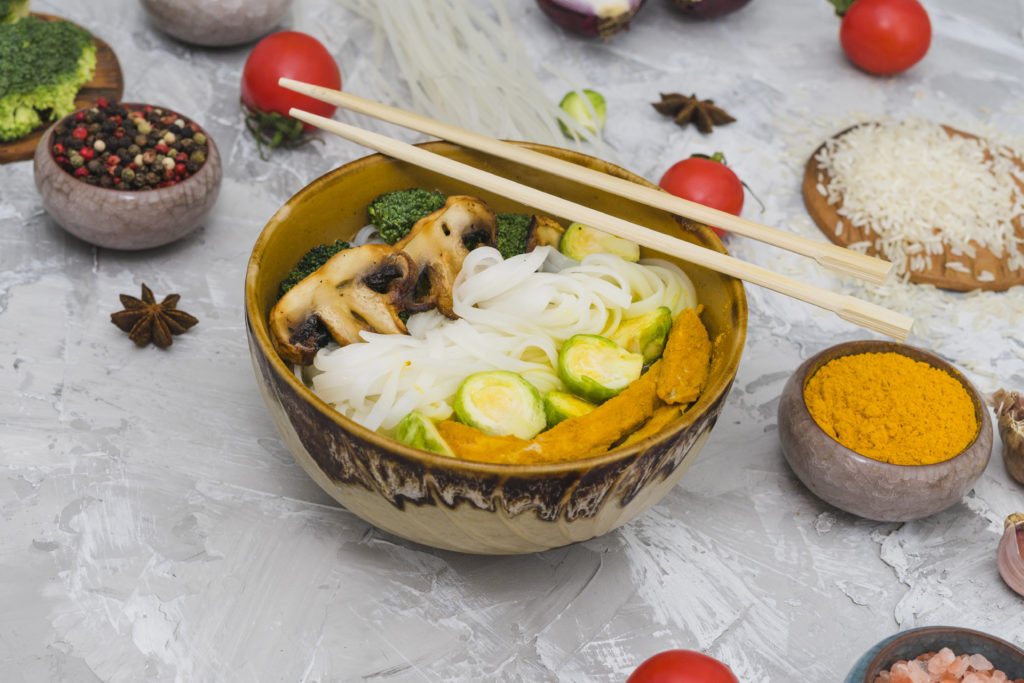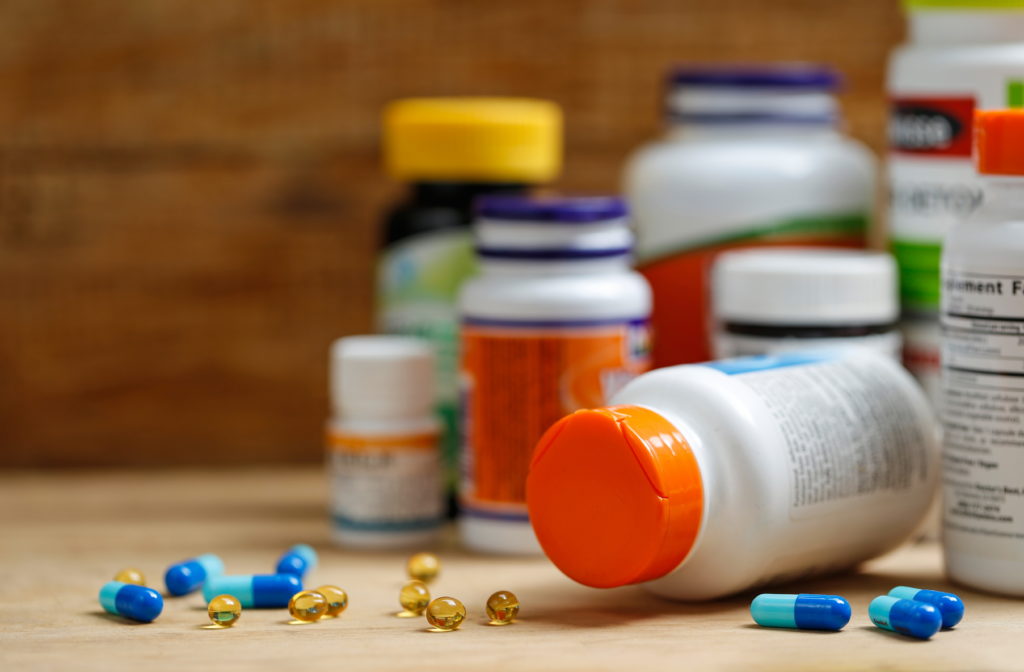Turmeric: An Ancient Spice Worth Its Weight in Gold
Disclosure: We receive a small commission for purchases made via affiliate links
You may have noticed a surge in popularity of turmeric, turmacin over the last few years. Now consumables such as turmeric teas, nut spreads and supplements are common place. The truth is, it has actually been a popular spice in India for thousands of years, used in cooking and for Ayurvedic medicinal and religious purposes, and used in other parts of the world for hundreds of years.
Key points:
- Active ingredients of turmeric offer a range of potential health benefits, including improvements to the osteoarthritic joint’s structure, pain level and function (turmerosaccharides), and antioxidant, antimicrobial and anti-inflammatory actions, protection against chronic inflammatory diseases like some cancer, protection of the cardiovascular system, liver and brain- perhaps even offering promise in Alzheimer’s disease and depression management (curcumin)
- The evidence for these benefits is becoming more convincing; however, there is a need for more high quality, randomised controlled human studies showing clinical outcomes. A further area that might be worth exploring is what, if any, factors can affect the amount of time curcumin is in the system before being metabolised and excreted
- Your choice of turmeric, turmerrosaccharide or curcumin product should be individualised to your health profile and made in consultation with your doctor, particularly if you plan to eat/drink large amounts of turmeric or take supplements, to avoid any unwanted side effects
- If opting for curcumin supplements, look for those that also contain fatty molecules and/or piperine to maximise bioavailability

Traditional Ayurvedic uses of turmeric include infection, wound, and injury treatments, plus the prevention of chronic diseases such as diabetes, asthma, and various inflammatory diseases. It has taken a while for Westerners, and western science, to catch on. And we have obtained evidence in support of the value of this delicious orange spice.
While there are a number of phytochemicals which may contribute to the benefits of turmeric, two of the key ones are turmerosaccharides and curcumin.
Image credit: Background photo created by freepik – www.freepik.com
Turmerosaccharides unique to turmeric
Turmerosaccharides are long chains of carbohydrates unique to turmeric. I was unable to ascertain the quantity of turmerosaccharides that are naturally present in turmeric. However, a turmeric extract known as Turmacin containing > 10% turmerosaccharides by weight has been developed. Generally supplements do contain higher concentrations of active ingredients than food sources, so it can be expected in this case too. Turcamin also contains a negligible amount of curcuminoids, so it is thought that the effects of Turmucin can primarily be attriuted to turmerosaccharides.
Turcamin (i.e. turmerosaccharides) appear to have therapeutic benefits in osteoarthritis prevention and management. These include:
- Inhibition of oxidative damage from hydrogen peroxide and reduced inflammation. This has been proven in animal and tissue culture studies. As a result, enzymes that wear down cartilage become less active.
- Reduced joint pain and reliance on pain-relieving medications, and improved function has been shown by a small randomised controlled trial. Mice studies reinforce the notion that the turmerosaccharide portion of Turcumin is responsible for the pain reduction. Unfortunately the validated scales used to assess pain have elements of subjectivity, but it is the best measure we have.

- Chrondocytes (cartilage cells) produce less of the catabolic factors which lead to their own death.
- Protection of collagen and glycosaminoglycans, which provide structural integrity to cartilage. Damage to these compounds, on the other hand, can disturb chondrocytes anchorage points, leading to their death and further progression of osteoarthritis.
Image credit: Woman photo created by pressfoto – www.freepik.com
Curcumin: key compound in turmeric
Curcumin is a polyphenol with a range of benefits:
- It works on the molecular level to target proteins involved in gene transcription, inflammatory mediators, enzymes which catalyse many biochemical reactions, and substances stimulating growth
- These actions means it can inhibit the proliferation of cancer cells, improve endothelial function of blood vessels (key to blood pressure and clotting regulation), act as an antioxidant, anti-inflammatory and anti-microbial, and protect the liver and kidneys
- The anti-inflammatory actions are particularly significant, as it seems to help in chronic inflammatory diseases such as certain cancers, diabetes, heart disease and Alzheimer’s disease. However, it is not advisable to use turmeric or curcumin as a sole treatment for any of these diseases. For example, there is evidence of potential to blunt the invasive and metastatic activity of cancer cells, but it is far from a cure.
- Curcumin may even improve brain function and have a place in Alzheimer’s disease and depression management, as it has been seen to increase Brain Derived Neurtrophic Factor, which stimulates the growth, maturation and protection of neurons into adulthood.
Curcumin makes up approximately 2-6% of turmeric by weight, which means you won’t get much simply by adding turmeric to dishes in ‘normal’ amounts. More significantly, though, the effect of curcumin is limited by poor bioavailability- i.e. it is not particularly well absorbed into the system. In addition, it is rapidly metabolised and excreted, giving a limited window of opportunity for action.

As a fat-soluble molecule, it is better absorbed along with fat than aqueous solutions. So consuming a whole milk turmeric latte, for example, would provide you more of the active ingredient than a turmeric tea. Another way to increase absorption is to consume it with black pepper (which contains piperine). However, even curcumin doses up to 12 grams per day taken orally have been seen to have limited effect- in one study only two of 24 volunteers consuming 10g or 12g showed modest amounts of curcumin in the blood, while others had none.
There have been efforts to increase bioavailability- for example by incorporating curcumin into a solid lipid (fatty) particle. These have improved solubility, and moreover, mouse tissue culture studies have shown that they dull the inflammatory responses of macrophages (immune cells). Further studies should be done to confirm these findings, and to see whether they are equally applicable to humans.
Other supplement formulations may also increase absorption. Two supplements where curcumin was mixed with different fatty molecules produced 7.9 times and 1.3 times more curcuminoid presence in the blood compared to regular curcumin supplements. Curcuminoids are a group of related chemicals found in turmeric, of which curcumin is the most potent. Interestingly, the supplement producing the most impressive result here actually increased the presence of a less potent form of curcuminoid in the blood in preference to curcumin. A different supplement- combining curcumin with derivatives of cellulose, a natural antioxidant and a carrier that can mix with water produced 45.9 times higher blood curcuminoid levels than regular curcumin supplements. Another compound of interest is tetrahydrocurcumin – a metabolite produced from curcumin that has even higher antioxidant and possibly anti-inflammatory activities. Unsurprisingly, the supplements producing the highest blood curcumin levels also produced the highest tetrahydrocurcumin levels.
A strength of the above study is that it was a randomized, double-blind, crossover human study in healthy volunteers, which takes out a lot of risk of placebo effects and bias, and of differences in physiology between volunteers confounding the results. On the other hand, it was a small study of only 12 people. Also, data capture ended before it is expected that curcuminoids would be eliminated from the blood. To get a more complete picture of the effects, it would be worth collecting blood over a longer period of time.
What is the best way to consume?

To get specific therapeutic benefits, you may need to take supplements or foods that are enriched in turmeric. There are a number of turmeric and curcumin supplements on the market that use piperine and/or fats to increase their effect. There are currently far fewer choices for supplements offering concentrated levels of turmerosaccharides.
As an alternative to supplements, you could take advantage of the enhanced curcumin absorption by trying turmeric nut butters or adding turmeric to dishes that contain fat and black pepper.
Supplements may help obtain therapeutic doses.
Image credit: Food photo created by xb100 – www.freepik.com
Of course, like all good things in life- there is also the potential for too much. So you should only increase your turmeric intake slowly, with caution, and medical guidance that takes into account your particular needs and any pre-existing conditions or medications.
What are the side effects to consuming too much turmeric?
Generally, consuming turmeric in moderate amounts in its natural whole form should be safe, as there are limitations to the quantity of chemically active compounds you will absorb. However, there are reports of some people experiencing nausea, dizziness, diarrhoea and even an abnormal heart rhythm when taking turmeric.
Risk is increased when taking supplements, because of the much higher doses they provide. I was unable to determine a consensus from the literature on what the upper limit should be for either whole turmeric, curcumin or turmerosaccharide supplements. However, the European Food Safety Authority in 2010 suggested that a curcumin intake of 3mg for each kilogram of body weight each day is adequate and safe.
Extra care should be taken if you’re pregnant, trying to have a baby (men or women), have gallbladder problems, bleeding disorders or taking medications to reduce blood clotting, diabetes, hormone-sensitive conditions or upcoming surgery.
The Verdict
Turmeric is certainly a healthy ingredient to include in your diet. But if you’re looking for a significant boost to any specific dimension of health, supplements of turmeric, turmerrosaccharides or curcumin are probably the way to go (the research is suggestive of their benefit- alas not quite definitive)… BUT, make sure to talk to your doctor first, as there can be some nasty side effects to having too much… and there are a number of people who are particularly at risk.
How do you consume your turmeric? Comment below!
Akazawa, N., Choi, Y., Miyaki, A., Tanabe, Y., Sugawara, J., Ajisaka, R. and Maeda, S. (2012). Curcumin ingestion and exercise training improve vascular endothelial function in postmenopausal women. Nutrition Research, 32 (10), 795-799. https://doi.org/10.1016/j.nutres.2012.09.002
Bandyopadhyay D. (2014). Farmer to pharmacist: curcumin as an anti-invasive and antimetastatic agent for the treatment of cancer. Frontiers in chemistry, 2, 113. doi:10.3389/fchem.2014.00113
EFSA Panel on Food Additives and Nutrient Sources added to Food (ANS); (2010). Scientific Opinion on the re‐evaluation of curcumin (E 100) as a food additive. EFSA Journal, 8( 9):1679. [46 pp.]. doi:10.2903/j.efsa.2010.1679
Hurley, L.L., Akinfiresoye, L., Nwulia, E., Kamiya, A., Kulkarni, A.A., and Tizabi, Y. (2013) Antidepressant-like effects of curcumin in WKY rat model of depression is associated with an increase in hippocampal BDNF. Behavioural Brain Research, 239, 27-30. https://doi.org/10.1016/j.bbr.2012.10.049.
Jäger, R., Lowery, R.P., Calvanese, A.V. et al. (2014). Comparative absorption of curcumin formulations. Nutr J 13, 11 doi:10.1186/1475-2891-13-11
Nahar, P.P. Slitt, A.L., and Seeram, N.P. (2015). Anti-Inflammatory Effects of Novel Standardized Solid Lipid Curcumin Formulations. Journal of Medicinal Food, 18:7, 786-792.
Velusami, C.C., Richard, E.J. & Bethapudi, B. (2018). Polar extract of Curcuma longa protects cartilage homeostasis: possible mechanism of action. Inflammopharmacol 26, 1233–1243. doi:10.1007/s10787-017-0433-1
WebMD. Turmeric: side effects. https://www.webmd.com/vitamins/ai/ingredientmono-662/turmeric. Accessed 21/1/20

I’m the co-founder of Evidently Healthy, the resident biohacker and a marketer’s dream. As someone who believes you can’t put a price on health. I’m passionate about improving lifespan and health span. In my spare time I enjoy traveling, snowboarding, diving, podcasts, exercise and eating in and out. #Coffee-Lover Rating global coffee bean for years..

Thanks for this inspirational and very well written article. I want to add how I lost weight effortlessly.
Thanks for the strategies you write about through this web site.
Terrific article